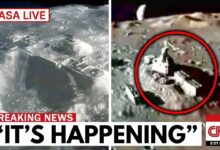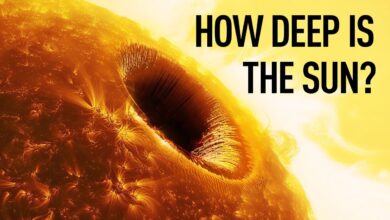Voyager 2 just made an IMPOSSIBLE Discovery at the Edge of the Solar System

Voyager 2: The Probe That May Have Touched the Edge of Reality
When NASA launched Voyager 2 in 1977, it carried more than just scientific instruments. On board was a golden record — a message from Earth with music, greetings in 55 languages, and a map pointing to our home. No one imagined that this small spacecraft, powered by 1970s technology and with less computing power than a modern calculator, would become humanity’s first witness to a realm that defies everything we know about the universe.
Now, more than 12 billion miles from Earth, Voyager 2 has entered a region where the rules of space seem to break down. Plasma pulses erratically. Magnetic fields twist and ripple like silk ribbons. Particles move with uncanny coordination — not like random scatter, but like a cosmic dance choreographed by something unseen.
What Voyager 2 found wasn’t just strange — it was unsettling. Scientists once believed the heliopause, the outer boundary of our sun’s influence, would be a quiet zone. A soft transition. But as Voyager 2 crossed it, its instruments told a very different story. Instead of calm, it found tension. Instead of fading chaos, it found magnetic fields growing stronger — three times stronger than expected — and twisting in impossible directions.
Some experts suggested the spacecraft had encountered a filament of galactic magnetism — a kind of cosmic backbone. Others wondered if it had stumbled upon a relic from a dead star. And in hushed voices, a few even asked: Could this be artificial? A forgotten transmission tower adrift in the void?
As the probe ventured deeper, the plasma it encountered didn’t behave like anything in known physics. It was colder, denser, eerily structured — not like a gas cloud, but more like a membrane. A veil. A living, patterned zone. Scientists called it a liminal zone, a term borrowed from psychology for things that don’t quite fit anywhere.
And then came the echoes.
Voyager’s instruments began picking up radio waves — not noise, but hauntingly organized pulses. Low-frequency hums. Rhythms. Some sounded like a heartbeat. Others, like a call unanswered. The patterns weren’t random. They shifted — as if responding to something.
Were these echoes from ancient supernovae? Gravitational waves? Or were they something even more unsettling — interference from a presence that had noticed us?
Then, another anomaly: a sudden wall of high-energy particles, only a few million kilometers thick, packed tightly and moving in parallel. Not random, but guided. The particle density pulsed in perfect intervals. Too perfect to be chance. Simulations failed to explain it.
And buried in the data — a pattern.
A spiral. A logarithmic structure that kept appearing — in the plasma waveforms, in the timing of magnetic fluctuations, even in the distribution of cosmic particles. It was the golden ratio — φ — a mathematical signature found in everything from nautilus shells to galaxies, but never before in interstellar data.
Only Voyager 2, in that exact location, captured it.
And then something truly bizarre happened.
The spacecraft’s orientation began to shift — gently, slowly — without commands, without malfunction. It was as if something external, invisible, was gently steering it. Scientists called this the Zone of Rotational Drift. Theories ranged from local gravitational eddies to unseen cosmic currents — or worse, the residual wake of something massive that Voyager had unknowingly followed.
Finally, the most chilling discovery yet.
Voyager 2 recorded a pulse — a radio signal almost identical in frequency and waveform to the one it emitted at launch in 1977. But this one came from ahead, not behind. Not an echo from Earth. Not a bounce. Something out there had mimicked its birth cry.
Was it a natural time-loop? A fold in space? Or… a response?
The implications rocked the scientific community. If that signal wasn’t just a coincidence — if it truly came from something aware of Voyager’s message — then the edge of the solar system isn’t empty. It’s occupied. And it’s listening.
Voyager 2 wasn’t designed to make it this far. It was never supposed to pierce the veil between the known and the unknowable. And yet, powered by radioactive decay and driven by human hope, it reached a place where the laws of physics start to blur — and meaning begins to emerge.
Because maybe the most profound discovery isn’t in the magnetic anomalies or plasma walls. It’s in the realization that the universe may be responding.
We sent Voyager 2 to learn about space.
But maybe space is using Voyager 2… to learn about us.








